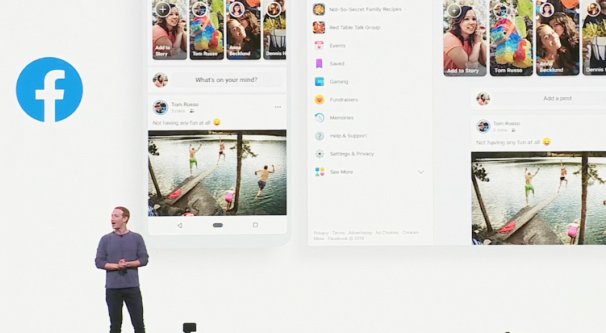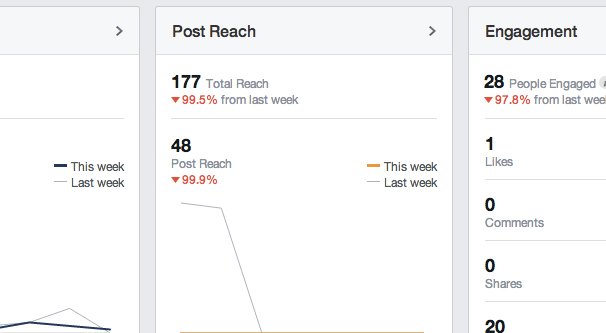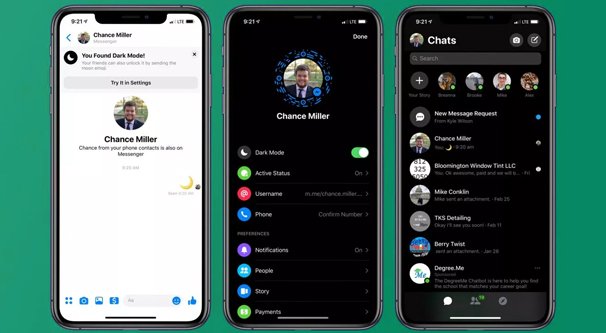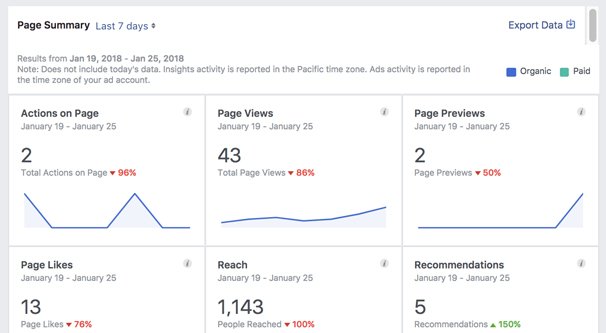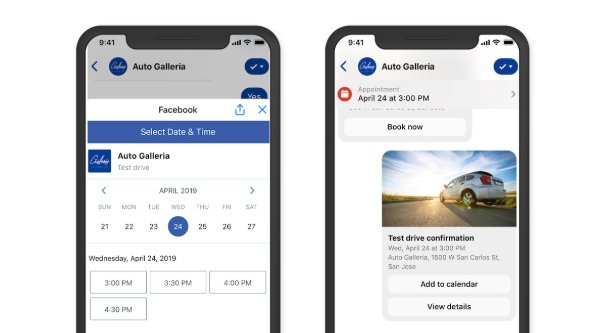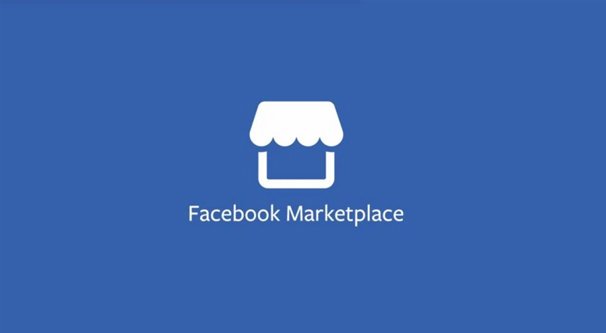 Written by ContentPowered.com
Written by ContentPowered.com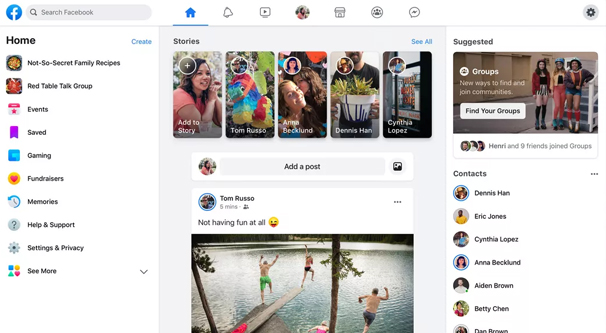
Facebook has had a difficult time of it in the last few years, rocked by scandal after scandal, yet it struggles along nonetheless. Of course, before you feel bad about them, remember that the company is still worth so much money that a historically large FTC fine is still mere pocket change they set aside for the contingency, less than a single quarter’s profits.
Zuckerberg wants to move Facebook further from the “public town square” role it has found itself in, and back towards the individual communications and friend-based platform it was when it was first created. Among the many possible changes this entails, the largest is surely another new redesign of the platform as a whole.
That’s right: Facebook is getting another facelift.
It remains to be seen just how deep the changes run. Will this be a cosmetic update, shifting around some features and hiding others, or will there be deeper functionality changes as well?
Facebook’s statements indicate the latter. The new focus aims to push group-based communications rather than the central news feed, and will more fully integrate both WhatsApp and Messenger into the platform, with accompanying encryption. Stories will be emphasized, as will groups. To quote Zuckerberg himself, “Everywhere you can see and connect with friends, you’ll be able to see and connect with groups; it’s going to be woven into the fabric of Facebook.”
As marketers, this is terrifying.
I don’t mean to alarm you, but if you’re not concerned, you’re not paying attention. Any time a platform makes a major shift, marketers are forced to adapt, and there are always those who are left behind. The total roll-out of the new design will be a landmark in the history of Facebook Marketing, a date to remember. Every single article written about Facebook marketing will need an update, and anything older than that date will be questionable in terms of utility.
Facebook has to walk a very thin line. On the one hand, they have to keep pleasing their marketing base. Marketers who pay for ads are part of the lifeblood of Facebook, though we aren’t as crucial as we like to think. A huge portion of Facebook’s revenue comes from selling personal data they harvest, and they don’t need marketers for that. Their profits would go down if we all bailed, of course, but they wouldn’t fold completely.
On the other hand, Facebook wants to further drive people into groups and social connections, and away from the commercialized spam feeds, fake news, and cyclical racism that plagues the site as it currently stands. This means, in all likelihood, it will be increasingly harder to reach people organically, unless you build a community yourself. Some brands are good at this, some have already built their communities, and others will be scrambling to play catch-up.
Of course, right now, just about everything is speculation. Facebook hasn’t released much information on their redesign, particularly on the back end, so we’re just as much in the dark as everyone else.
That said, we can make some educated guesses based on what has been revealed, and some extrapolations based on how people usually react to these kinds of changes. Here are my predictions.
Everyone Will Experience a Dip in Audience
The first and most immediate impact is that pretty much every single brand will experience a dip in audience numbers, engagement, and reach. This is always going to happen, as huge numbers of people decide to use the redesign – and change in features – as a reason to leave. This happens every time any website changes dramatically, and Facebook will be no different. The real difference is in scale; a website with ten million users might lose a few tens of thousands. Facebook, with billions of users, might lose millions.
So, when the rollout happens, don’t be surprised to see your numbers drop. Some people will leave permanently. Some people will leave temporarily. Many people will have to adjust to seeing different content in their platform and experiencing it in a different way. How exactly this will impact the average business remains to be seen.
Advertising Imagery May Change
The biggest and most dramatic change to Facebook with this redesign is simply the layout and the colors. Instead of their current blue-and-gray color scheme, they’re opting for a cleaner, more app-like white with larger buttons, larger panels, and larger images. Personally, I feel like it doesn’t use screen space very well, but I also haven’t had my hands on it just yet.
With different organization for different elements on the page, and different colors taking center stage, the imagery that works and stands out for ad images will be different. Anything you currently have split tested and approved to run will need adjustment. You don’t know how it will blend in or stand out against the new styles.
That’s right; styles, plural. One thing Facebook is finally implementing alongside this redesign is a night mode. The dark mode uses dark grays instead of a white background, and promises to be a much more pleasant experience for people who browse at night, or who simply don’t like staring at a white screen all day.
One major question I have is: will there be different ad targeting options for users in day mode versus night mode? If so, you will be able to make ads that match the color schemes better and make for a better experience for each type of user. If not, you’ll have to determine which works better with your existing audience.
Ad Positions May Change
One question we have that has not yet been answered is what sort of ad positions will exist after this new rollout. Will sidebar ads still exist? The screenshots we’ve been shown thus far don’t leave a lot of space for those notoriously low-performing ads, though they certainly may exist on one side or another.
News feed ads will still exist for sure, and you may be able to target specific groups with advertising, though that remains to be seen.
Chances are pretty good you will be able to promote your group – and more on “your” group in a moment – in the suggested groups features. I would not be surprised to see a whole host of new ad positions, or adapted ad positions, and that will include a whole new round of testing and analysis to figure out which ones work best for which purposes.
Groups Will Be Dramatically More Important
One of the biggest takeaways from the Facebook redesign preview is the central prominence of groups. I know some people who use Facebook today with barely a glance at groups, and I know others who spend their entire lives posting inside groups rather than outside of them.
One thing can be said for certain: the algorithm is already gearing up to showcase posts from groups far more than they currently do. In fact, even right now, posts in groups are taking over the news feed. A single active group can dominate a feed rather than organic posts from friends and family. Whether Facebook thinks people are going to make family groups or what, I don’t know, but it’s actually been kind of annoying.
Near the end of last year, Facebook created “branded groups” as a new feature for business pages. Branded groups can be closed, hidden, or open groups, but the key is that they function identically to normal groups right now, with one critical difference. That difference is the official association between the page that owns it and the group.
In fact, one of the biggest problems with groups in the past is that it’s been a hassle to identify which group is the official group for a given company. Unofficial groups, fan groups, association groups, and others all clutter up the search results. With branded groups, you get a group that has a few special features because of its link to your brand page.
To make a branded group, simply make a group as normal, and then start filling out your group info in the settings. The critical option is Linked Pages; you can link your specific brand page to your group page, which allows both to display links to the other in an official capacity.
I highly recommend creating your branded group community now. Get in ahead of the game, before you’re just another brand trying to gather up a community. Get used to the concept of marketing via groups ahead of the pack.
A generally good idea is to add some kind of restriction or approval process to your group membership. However, this will require active moderation; you don’t want people to linger in the approval queue so long they forget what they wanted to join for.
You can use tricks like posting a group widget on your website, one that will have a preview of the group and a button to join it. This post has a good example in it.
Groups will be a great source of marketing for the future, and I expect group membership to be as important if not more important than the number of people who follow your profile or like your page. People in your groups will be more active and engaged with your brand, and will be your best core audience. Reach on organic pages is likely to drop more than ever, but that reach will be replaced by reach in your groups.
Facebook may roll out additional rules on how you can recruit for groups. I would not be surprised to see businesses offering incentives to people who join their closed groups, and I wouldn’t be surprised to see Facebook roll out some kind of rules to restrict such behavior. The specifics, of course, remain to be seen.
Stories Will Be More Important
Facebook has been slowly pushing the prevalence of Stories ever since they were rolled out as a successful feature on Instagram. The idea of posting something time limited, that disappears after a meager 24 hours, can inspire a lot of engagement due to the Fear Of Missing Out. FOMO is important to a lot of marketing, and Stories are a great way to capture it.
Stories are already prominent on the Facebook app and on Messenger, and they’ll be even more prominent on the web once this redesign rolls out. You can even see in screenshots how they take up a large panel at the top of the news feed central pane, almost a third of the screen, so you can bet they’re going to be important.
Using stories in your marketing is something every marketer will need to learn sooner or later. Thankfully, it’s a skill that will carry over between both Facebook and Instagram. For that reason alone, it’s probably well worth learning if you haven’t already.
Messenger Takes Center Stage
Facebook Messenger is going to be increasingly important as time goes on. Facebook has already been rolling out an increasing series of useful features for brands, ranging from the introductory message to chatbot integration.
While it’s not related to the redesign, Facebook’s conference where they announced said redesign also announced a new feature for Messenger. This new feature is essentially guiding a user through filling out a form using a template for messages. Your bot asks the user questions and prompts them for specific information, which is then passed to your system in a nicely formatted sheet you can use to fulfill orders or initiate a sales contact.
Another system they revealed for messenger allows integration with the appointment system. Users will be able to answer a few questions from your bot and book an appointment with you directly through Messenger, and they likely won’t even need to interact with a human on the other end unless their responses are non-standard or they ask for a real response.
Marketplace May Be Useful
One final note is that Facebook appears to be making some changes to Marketplace, their attempt to supplant Craigslist. Right now it’s largely used as a classifieds listing, and users are left to their own devices for processing payments and shipping items. With the new features, however, they’re rolling in their payment system and also integrating a shipping processor, so you’ll be able to ship and receive payment from within Facebook’s ecosystem.
Will this supplant extensions like Shopify? That remains to be seen. We haven’t seen what Pages will look like or if tab apps and storefronts will still exist, though I imagine they will. Marketplace may be a good place to get started, at least.
